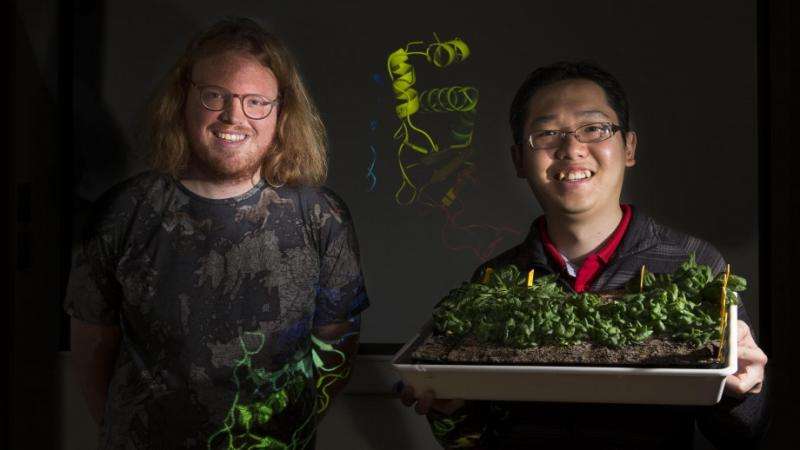Research effort to develop drought-proof crops

International research led by The Australian National University (ANU) has found how plants, such as rice and wheat, sense and respond to extreme drought stress, in a breakthrough that could lead to the development of next-generation drought-proof crops.
Lead researcher Dr Kai Xun Chan from the ANU Research School of Biology said the team discovered an enzyme that senses adverse drought and sunlight conditions, and how it works from atomic to overall plant levels.
"The sensor in plant leaves is constantly sensing the state of its environment in terms of water and light levels," Dr Chan said.
"The sensor is able to sense when conditions become unfavourable, such as during extreme drought stress, by changing itself into a form with altered shape and activity.
"This sets off a 'fire alarm' in the plant, telling it to respond to drought by making beneficial chemical compounds, for instance. But in the field, this can occur too late and the plant would have suffered damage already.
"If we can get the alarm to go off at the first signs of water deficit, we can help the plant survive severe droughts."
More drought-tolerant crops are crucial to helping ensure global food security and can reduce the impact of drought on the national economy. A 2015 Climate Council report found that the Australian GDP fell one per cent due to drought and lower agricultural production in 2002 and 2003.
Drought normally hits wheat at the flowering and seed stage, which is critical in determining the size of a crop's harvest.
By activating the sensor alarm faster during a dry season, the plant can activate counter-measures in its leaves to prevent unnecessary water loss and ensure that the plant survives until the next rainfall.
"We're really excited about the potential applications of this research, which range from genetic modifications and plant breeding to the development of a chemical spray that directly targets this sensor to set off the alarm in plants," Dr Chan said.
"This could save crops and ensure they produce bigger yields. The chemical spray would provide an innovative way to reduce the impact of drought stress."
Work by Dr Peter Mabbitt and Associate Professor Colin Jackson from the ANU Research School of Chemistry, using X-ray facilities at the Australian Synchrotron, enabled the team to create a 3-D model of the sensor enzyme.
Dr Chan said they will use this model and a computer program to identify candidate chemical compounds that match well with the enzyme's structure.
"This work will be a matter of fitting in a piece of the puzzle," Dr Chan said.
"Within two years, we hope to identify potential compounds for a chemical spray which will rescue crop yields. We would then need to perfect a compound in consultation with farmers and other industry players.
"We have already received funding from ANU Connect Ventures Discovery Translational Fund for this follow-up project."
More information: Kai Xun Chan et al. Sensing and signaling of oxidative stress in chloroplasts by inactivation of the SAL1 phosphoadenosine phosphatase, Proceedings of the National Academy of Sciences (2016). DOI: 10.1073/pnas.1604936113
Journal information: Proceedings of the National Academy of Sciences
Provided by Australian National University


















